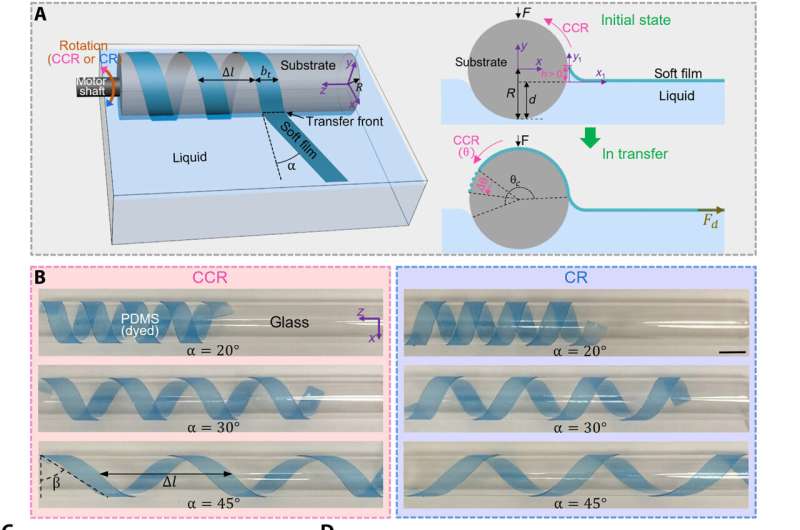This article has been reviewed according to Science X's editorial process and policies. Editors have highlighted the following attributes while ensuring the content's credibility:
fact-checked
peer-reviewed publication
trusted source
proofread
Soft robotics research offers new route for weaving soft materials into 3D spatial structures

Ever wonder why the most advanced robots always seem to have hard bodies? Why not more pliable ones, like humans have?
Researchers working on so-called "soft robotics" attempt to incorporate the feel of living organisms into their creations. But the field hasn't taken off because the softer components haven't been easy enough to mass-produce and incorporate into the designs—until now.
University of Virginia researchers have invented a manufacturing process for weaving soft materials such as fabrics, rubbers and gels so that they can be compatible with gadgets, which may lead to a soft robotics revolution.
The process may also improve or expand wearable electronics, biomedical devices and a plethora of other internet-based products with complex outer surfaces.
The researchers detailed their patent-pending design in an article that appeared Wednesday in Science Advances.
"Our work offers, for the first time, a state-of-art concept and route for weaving soft materials into 3D spatial structures," Baoxing Xu, an associate professor of mechanical and aerospace engineering, said. Xu collaborated with then-UVA doctoral students Yue Zhang and Mengtian Yin on the project.
"There are similar manufacturing approaches in industry, but all are designed for either rigid materials or nanoparticles, not for soft materials with continuous structures in forms such as film, ribbon and wire," Xu said.
The new approach relies on a liquid-based rolling transfer system that can make very small and precise adjustments during weaving, resulting in fast and damage-free manufacturing, he said.
More information: Yue Zhang et al, Elastocapillary rolling transfer weaves soft materials to spatial structures, Science Advances (2023). DOI: 10.1126/sciadv.adh9232


















